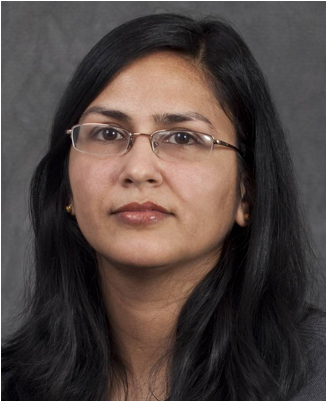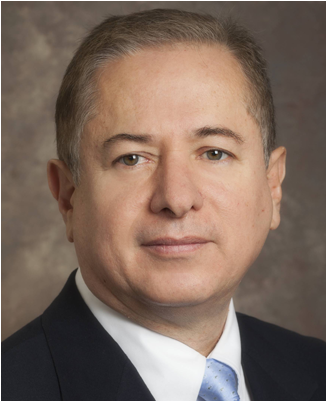Compressive sensing (CS) is an emerging field of research with far-reaching impact on a variety of applications. For signals admitting sparse representations, CS permits collection of a significantly reduced number of measurements than required by the Shannon-Nyquist sampling theorem and provides efficient superresolution signal reconstruction. In essence, CS provides means for reducing data volume and efficient sensor deployment without a degradation in system performance. Such capabilities are highly desirable for a range of civil and military applications.
The primary objective of this special section is to concentrate the recent developments within the CS framework in a variety of imaging modalities into one place, rather than them being scattered among many sources. In so doing, we aim to promote cross-fertilization of concepts, methods, techniques, and enabling technologies across the various application areas of CS. This section includes a total of 13 contributions from researchers in academia, industry and governments. It provides a sampling of the current treatment of pressing issues in CS as applied to the following imaging modalities: (1) radar imaging, (2) video, (3) optical imaging, and (4) magnetic resonance imaging.
The topics covered in the six articles on compressive radar imaging are: joint localization of stationary and moving targets inside building structures as discussed by Qian, Ahmad, and Amin; robust sparse through-the-wall radar image reconstruction as presented by Tang, Bouzerdoum, and Phung; electromagnetic mapping of building interior layout as addressed by Lagunas et al.; target detection in multi-input multi-output compressive noise radar imaging and waveform design for ultra-wideband compressive radar as provided in articles, by Kwon, Narayanan, and Rangaswamy, and by Shastry, Narayanan, and Rangaswamy; and finally, off-the-grid target imaging in sparse ground-penetrating radar as addressed by Gurbuz, Teke, and Arikan.
The topics covered in the four articles on CS in video are reconstruction of videos from streaming compressive measurements as discussed by Park and Wakin; decoding of framewise compressed-sensed video as presented by Liu and Pados; iterative video compressed sensing as addressed by Kim and Bilgin; and finally, acquisition of compressed measurements for efficient video reconstruction using a single-pixel camera as discussed by Noor and Jacobs.
The topics covered in the two articles on compressive sensing in optical imaging are object defect detection and recognition in three-dimensional terahertz imagery as presented by Brook et al.; and compressive active underwater laser serial imaging as discussed by Ouyang et al. Finally, the article by Liu, Nutter, and Mitra addresses fast magnetic resonance imaging in a compressive sensing framework.
We hope you will enjoy reading this special section of the Journal of Electronic Imaging. We express our sincere gratitude to all of the authors and the reviewers, whose diligent efforts made this special section possible. We also greatly appreciate the immeasurable support, assistance, and guidance of the Editor-in-Chief, Dr. Gaurav Sharma, as well as the SPIE editorial staff members, throughout the process.
Biography

Fauzia Ahmad received her MS degree in electrical engineering in 1996, and PhD degree in electrical engineering in 1997, both from the University of Pennsylvania, Philadelphia. Since 2002, she has been with the Center for Advanced Communications, Villanova University, Villanova, Pennsylvania, where she is now a research associate professor and the director of the Radar Imaging Lab. She is a senior member of SPIE and senior member of IEEE. She chairs the SPIE Compressive Sensing Conference and serves on the technical program committees of the SPIE Radar Sensor Technology Conference, IEEE Radar Conference, and IET International Conference on Radar Systems. She has over 120 journal and conference publications in the areas of radar imaging, radar signal processing, waveform design and diversity, compressive sensing, array signal processing, sensor networks, ultrasound imaging, and over-the-horizon radar. She has also co-authored three book chapters in the aforementioned areas.

Gonzalo Arce is the Charles Black Evans Professor in the Electrical and Computer Engineering Department at the University of Delaware. His fields of interest are computational imaging, nonlinear signal processing, and the analysis and processing of massive data. He received the 2010-2011 Nokia-Fulbright Distinguished Chair in Information and Communications Technologies. He is a fellow of IEEE and the Center for Advanced Studies. He has served as editor and guest editor of several journal publications of IEEE, OSA, and SPIE.

Ram Narayanan received his BTech degree from IIT, Madras, in 1976, and his PhD degree from the University of Massachusetts, Amherst, in 1988, both in electrical engineering. During 1976 to 1983, he worked as an R&D engineer at Bharat Electronics Ltd., Ghaziabad, where he developed microwave communications equipment. In 1988, he joined the University of Nebraska-Lincoln where he last served as Blackman and Lederer professor. Since 2003, he is a professor of electrical engineering at The Pennsylvania State University. He has coauthored over 100 journal papers and over 200 conference publications. His current areas of interest are noise radar, radar networks, compressive sensing, and radar tomography. He currently serves as a member of the IEEE Committee on Ultrawideband Radar (UWBR) Standards Development and associate editor for radar for the IEEE Transactions on Aerospace and Electronic Systems. He is a fellow of SPIE, IEEE, and IETE.

Dimitris Pados received the diploma degree in computer science and engineering from the University of Patras, Greece, in 1989, and the PhD degree in electrical engineering from the University of Virginia, Charlottesville, Virginia, in 1994. From 1994 to 1997, he held an assistant professor position in the Department of Electrical and Computer Engineering and the Center for Telecommunications Studies, University of Louisiana, Lafayette. Since August 1997, he has been with the Department of Electrical Engineering, State University of New York at Buffalo, where he is presently a professor. His research interests are in the general areas of communication theory and adaptive signal processing. He received a 2001 IEEE International Conference on Telecommunications best paper award, the 2003 IEEE Transactions on Neural Networks Outstanding Paper Award, and the 2010 IEEE International Communications Conference Best Paper award in Signal Processing for Communications for articles that he coauthored with students and colleagues. He is a recipient of the 2009 SUNY system-wide Chancellor's Award for Excellence in Teaching and the 2011 University at Buffalo Exceptional Scholar--Sustained Achievement Award.





